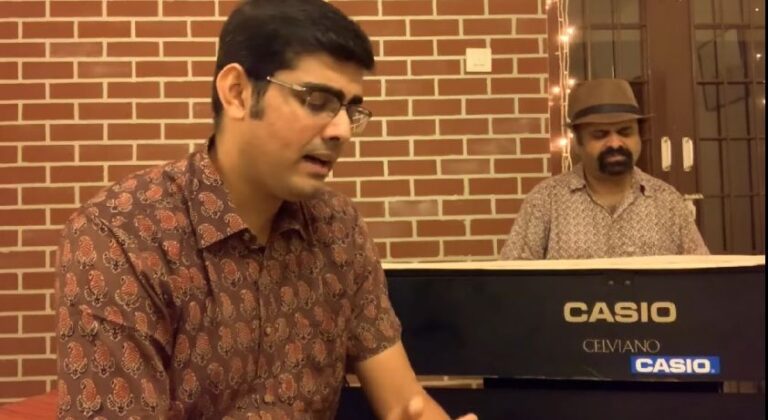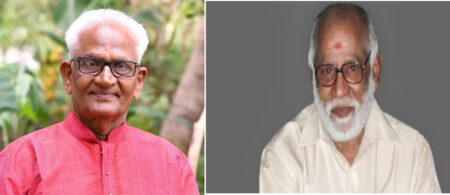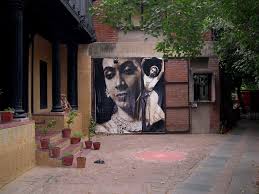An experimental music series, Hexagram tries to explore multiple dimensions of Indian classical music which is bound by common folds of raga and tala.
The traditional Carnatic concert format is a tricky one. Often, it won’t allow musicians to explore the different dimensions of a song so much so that singers are not able to engage with the audience non-musically (say, in dialogues). It’s pretty linear and straightjacketed. To explore it in-depth, a musician has to rethink and find innovative ways to present it which appeal to and connect with the audience. Hexagram is an experiment in that direction. Conceived by Carnatic vocalist Sikkil Gurucharan, Hexagram explores six songs of different genres, in-depth, with supporting discourses. Musicians including pianist Anil Srinivasan, guitarist Vedanth Bharadwaj, violinist Sayee Rakshit and percussionist NC Bharadwaj will join Gurcharan in this series.
“Indian classical music has a wide range of styles and repertoire but at the heart of it is the twin-entity of raga and tala; melody and rhythm; structured and unchained,” says Gurucharan. “Using these dual concepts, six different songs that portray known as well as rare dimensions of Carnatic music are going to be released in Hexagram, where six lines criss-cross each other to form two equilateral triangles.”
Hosted by California-based SciArtsRUs, a non-profit organisation promoting science and Arts, the series has six episodes in total. Each one will be released per week on YouTube and Facebook Channel of SciArtsRUs starting from April 11.
Common platform
The series consists of six different songs that are seemingly different from each other but have various points of intersection. Each episode will explore a serious concept of classical music. Concepts like the unchained exploration of a raga’s contours through an alapana or a virutham – a nuanced structure of rhythmic variations and a garland of ragas- are very common for regular concert-goers but new to a non- Carnatic audience. “The episode on raga alapana and virutham will discuss how it appeals to a non-Carnatic audience, why one should enjoy it, what are the boundaries, how it is conceived and the freedom it offers to an artist,” explains Gurucharan.
Hexagram also includes a rare crossover to Kabir’s works and Tagore’s compositions to showcase the intersecting points of raga and tala. “Indian music is philosophical. Songs from different parts of our country can also be brought into the fold of a common structure – a Hexagram,” says Gurucharan, who has done similar series of musical experiments including Advaitam, a vocal and vadya unison, earlier.
The science
Gurucharan explains, “Just like the epicentre that doesn’t change in the hexagram, the concepts of sruthi, tala, scientific techniques, creative freedom, teamwork and team building are all shared from that middle area which is similar also to the powerpoint (bindu) that represents the cosmic centre of the Sri Chakra.”
“Science has borne out the hexagram in interesting ways and this motif is found at the fundamental units of life itself. For instance, we know that the alternating nucleic acid bases are composed of the DNA and RNA helix. When the helix is deconstructed into units at the triplet or ‘codon’ level, this chain is connected in the form of opposing hexagrams” says Ranjini Kaushik, Founder of SciArtsRUs and a biochemist by profession. “ Being a scientist at heart I find it very interesting to see the connection between hexagram in biology and music,” she adds.
The series aims to spread classical music to a diverse audience and to promote multicultural dialogues.




